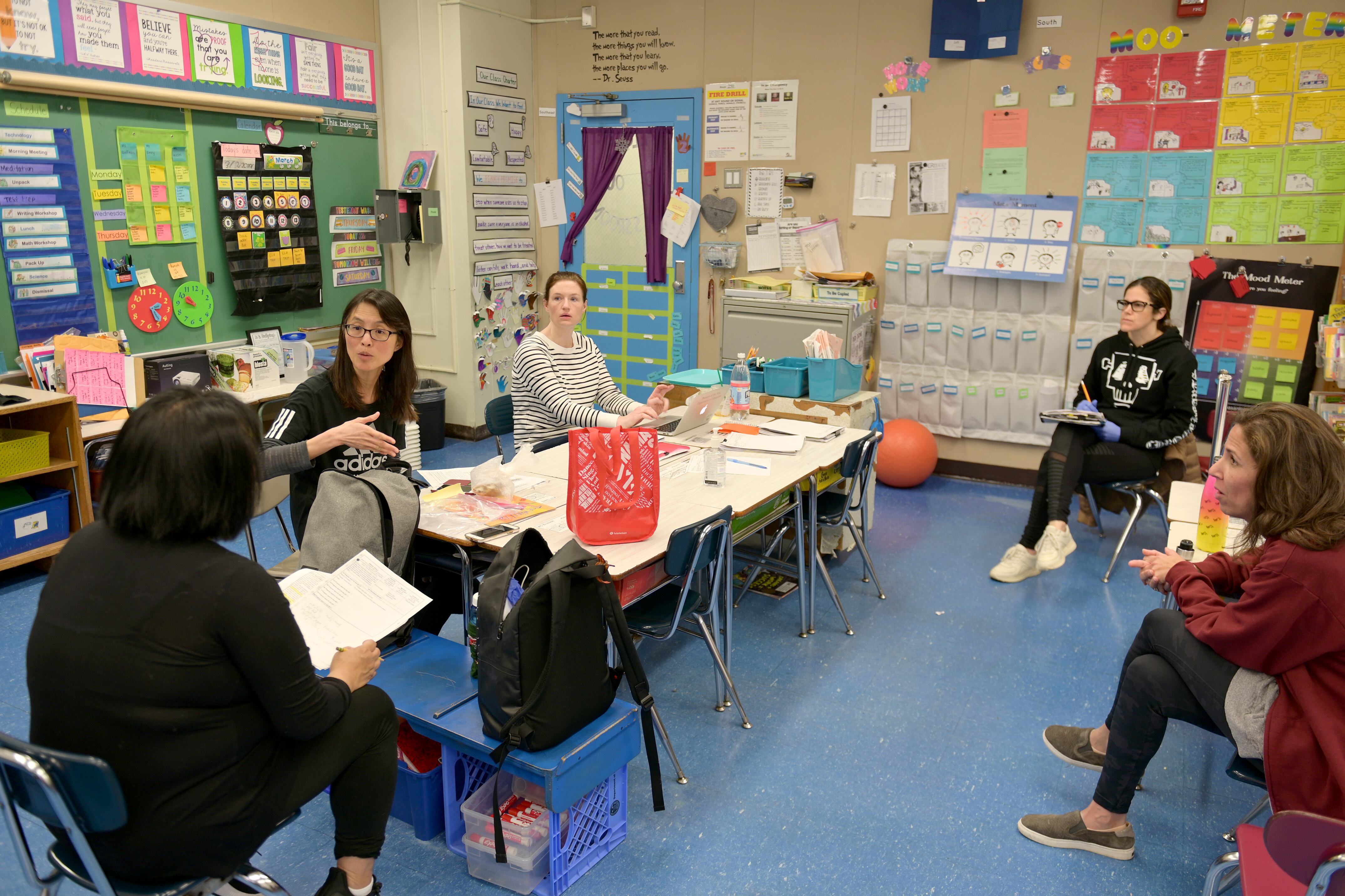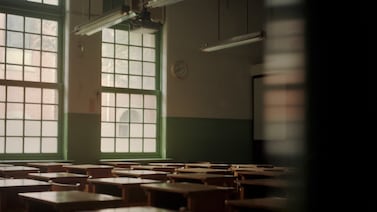America’s schools are in a dire financial situation.
Tax revenue has plummeted, and economists just officially declared that the country is in a recession. State budgets are set to shrink just as students’ and schools’ needs are set to grow, with students expected to start the next year behind academically and schools facing costly new health mandates.
It’s a math problem with just one solution, according to advocates and experts: Hundreds of billions in federal dollars to avoid teacher layoffs and pay cuts, slashed extracurricular programs, and school years cut short, with districts serving students from low-income families getting hit the hardest.
“The bottom line for us is, it’s going to take a massive amount of help,” said Lily Eskelsen García, president of the National Education Association, the country’s largest teachers union.
That means all eyes are on Congress — a rare moment in education, since schools are funded predominantly by state and local governments.
Congressional leaders have indicated that they’re likely to pass a stimulus bill that includes help for school budgets, perhaps by the end of July. The big question now is how much will be in it for schools. The decision will affect the budgets of nearly every school in the country for years, and help determine whether they will be able to effectively respond to the dual educational and health crises.
So how much money is actually needed? It’s impossible to say precisely, as a great deal of economic uncertainty remains. But projections are starting to come in.
One analysis predicted that states will lose out on $765 billion in tax revenue over three years — more than they lost during the last recession. (The author of this report said these projections are being updated and may improve somewhat, but won’t change dramatically.)
The Learning Policy Institute, a progressive education think tank, estimated that schools will be short $230 billion over the next two years due to a combination of budget cuts and new expenses.
To address this, the NEA and dozens of other public education groups are calling for a total of $250 billion in new federal aid for public schools and universities. More than 100 House Democrats signed onto a letter seeking $305 billion for public K-12 schools, or about $6,000 per public school student. And a bill recently passed by House Democrats included $58 billion for public schools and nearly $1 trillion for state and local budgets, some of which could go to public schools.
These are all huge figures, considering that during normal times the federal government spends about $60 billion each year on K-12 schools. But they’re more or less in line with projections about what will be needed to fill school district coffers.
In an indication of the increased advocacy push, the NEA put out its own estimate Wednesday of what will happen if Congress doesn’t act: 1.9 million lost jobs in education. And the American Federation of Teachers, the country’s other large teachers union, just projected billions in increased costs for schools.
Eskelsen García says the NEA is simply asking Congress to fill the budget holes. “This would not actually get us more money,” she said. “The school budget is this bleeding patient, and this would be the tourniquet.”
Michael Petrilli, president of the Fordham Institute, a conservative education think tank, thinks this is a reasonable goal, and agrees that Congress needs to step in.
“This downturn and this crisis was just of an order of magnitude that no state could have fully prepared for,” he said. “Most likely, states will have to slash their budgets and therefore slash services … and if that happens, it’s going to be bad for kids.”
Such a budget crunch will be bad for the economy writ large, too, since schools also provide jobs and allow parents to go into work. “The most important thing that Congress can do is help bail out the states,” said Diane Whitmore Schanzenbach, an economist at Northwestern University.
The federal government did step in during the last recession. The 2009 stimulus package provided approximately $100 billion for education, and likely saved hundreds of thousands of jobs in schools. When it ran out a couple of years later, though, school budgets took a big hit — and in many states, budgets didn’t fully recover for years.
Earlier this year, Congress took a first step, passing a relief package that included $13.5 billion for K-12 schools. But this was meant to cover extra costs incurred because of the global pandemic, not fill budget gaps, which it isn’t nearly large enough to do, anyway.
Senate leader Mitch McConnell and White House officials have indicated openness to helping state and local government in a more substantial way. But they’ve also recently been skeptical about the need for that aid package to be as large as what Democrats are seeking, citing the glimmer of good news in the most recent jobs report. The Heritage Institute, a conservative think tank, also issued a paper in April opposing a “bailout” for public schools, saying they should instead fire administrators and renegotiate union contracts.
Meanwhile, public school advocates aren’t the only ones looking for federal help. Private schools, who have a staunch ally in Education Secretary Betsy DeVos, face their own budget crisis.
“Congress must ensure funding serves all schools, teachers, families and students impacted by COVID-19 in public and private schools alike,” a coalition of private school groups and advocates wrote in a letter to Congress. “We believe there must be dedicated funding and tax policy changes to prevent massive non-public school closures.”
There are other knotty issues to work out. For instance, how should funding for schools be distributed to states and then districts? Research found that during the last recession, the stimulus wasn’t well targeted to the areas hit hardest by the downturn. Some states are being hit harder than others, and districts with more low-income students are generally struggling more to transition to remote instruction.
Another question: What, if any, strings should be attached to federal aid? A recent union think tank report argued for exchanging federal aid for a promise from states that they won’t make disproportionate cuts to their high-poverty districts.
If the money doesn’t come through — or if it’s not enough to avoid deep cuts — school leaders say student learning will suffer and schools will have difficulty complying with public health guidelines. Some district leaders are even questioning whether school buildings could open safely without that infusion.
Research also backs up the concern that budget cuts will translate into real losses for students. “To be sure, we’re going to expect it to translate into worse outcomes for kids,” said Schanzenbach, the Northwestern researcher.
Her research and others’ has shown that more money for schools improves students’ performance generally; during the last recession, research found that states that made deeper spending cuts saw declines in students’ test scores and college attendance.
“No child asked to be born during the pandemic,” Michigan state superintendent Michael Rice said recently, calling for federal help and warning of big cuts if it doesn’t come. “No child’s education should be harmed because he or she happened to grow up in part in the pandemic.”






